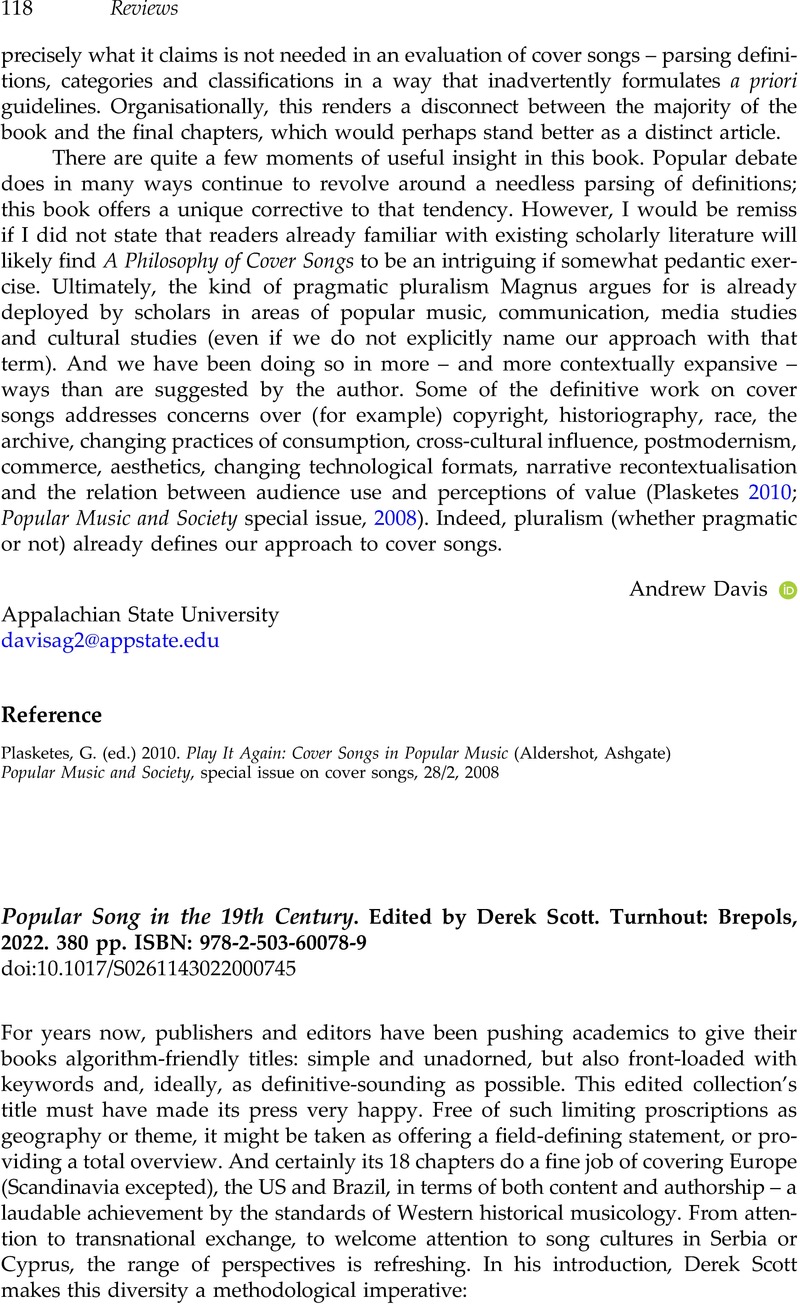No CrossRef data available.
Article contents
Popular Song in the 19th Century. Edited by Derek Scott. Turnhout: Brepols, 2022. 380 pp. ISBN: 978-2-503-60078-9
Review products
Popular Song in the 19th Century. Edited by Derek Scott. Turnhout: Brepols, 2022. 380 pp. ISBN: 978-2-503-60078-9
Published online by Cambridge University Press: 11 January 2023
Abstract
An abstract is not available for this content so a preview has been provided. Please use the Get access link above for information on how to access this content.

- Type
- Review
- Information
- Copyright
- Copyright © The Author(s), 2023. Published by Cambridge University Press
References
John, E. and Robb, D. 2020. Songs for a Revolution: The 1848 Protest Song Tradition in Germany (Rochester, NY, Camden House)Google Scholar



